Saint-Ildut church
( Municipality of Lanildut)

GPS : 48°28'25.2 N 4°44'42.6 W
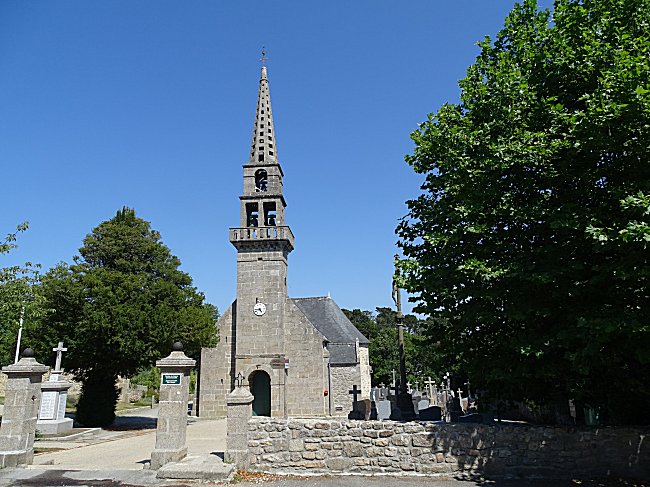
Access :
From St-Renan, take the D27 which runs along the COMIREN lake. It leads directly to Brélès, then to Lanildut.
Park on the right in front of the church.
Lanildut takes its name from the Breton lann, hermitage, and from Ildut the name of the saint to whom the church is dedicated. Not much is known about this prince, born in Wales at the fall of the Roman Empire, who founded the Llanilltud Fawr monastic school there. It is in this monastery that he would have trained other monks of aristocratic ancestry who later emigrated to Armorica such as Saint Samson, Saint Pol Aurélien, Saint Brieuc and Saint Gildas. Would Ildut himself have come to Armorica, as the legend says, to deliver wheat there? Would he have landed at Lanildut and really created a hermitage there? This is a possibility, but he would not have stayed there since his hagiography claims that he died in Wales around 522.
Overlooking the Aber Ildut estuary, the present church is part of a parish enclosure. It is a very sober building, built in 1786, which probably replaced an older church. In the shape of a Latin cross with a transept with rounded ends, the church has a trapezoidal chevet and a bell tower with a gallery that surmounts two floors of bells as well as an openwork spire of octagonal section.
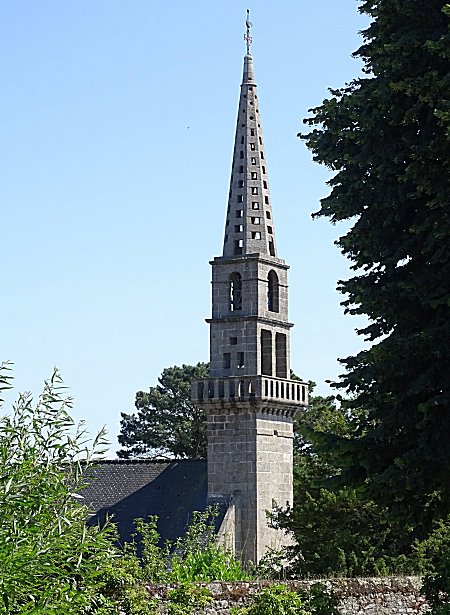
The main entrance has a porch and no ornamentation. The nave is entered through a small side door on the north side.
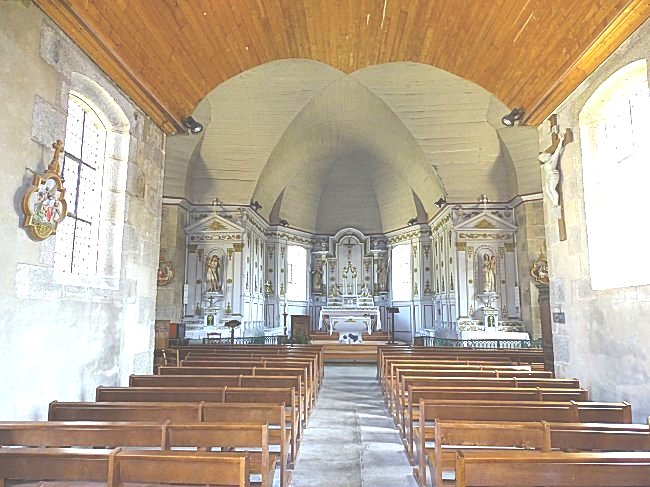
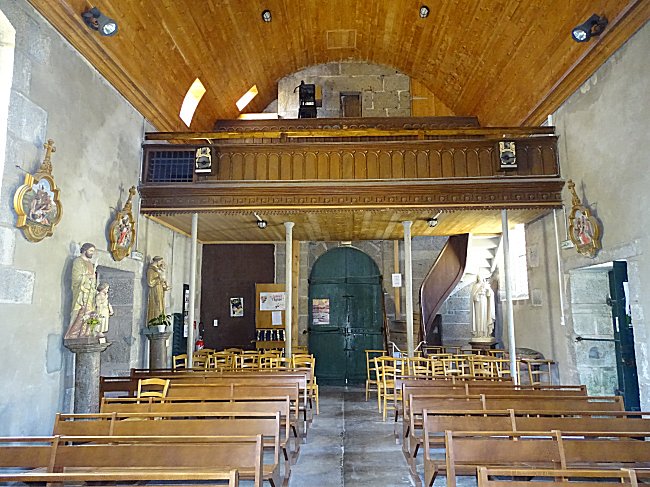
The nave, very simple, with a panelled vault, has neither stained-glass nor aisles. A deep double-storey grandstand has been built above the main entrance.
The stations of a Way of the Cross decorate the walls of the nave.
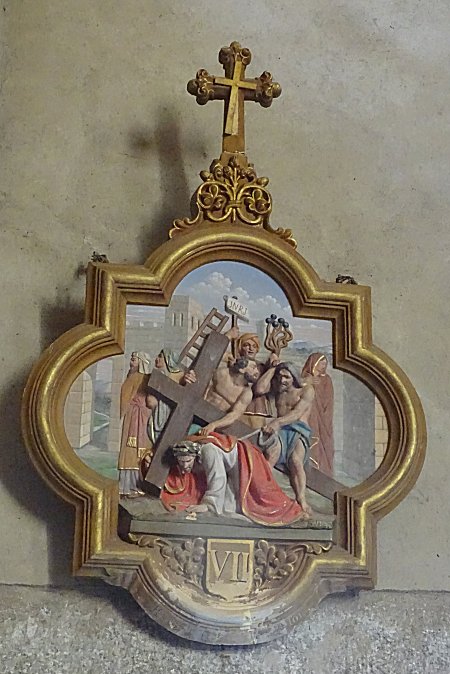
The walls of the headframe and side chapels are covered with a beautiful carved wooden panelling painted white and gilded with gold appliques. The work of a cabinet-making workshop from the early 19th century is well known, which was responsible for the ornamentation of the chapels of Kersaint and Saint-Gonvel at Landunvez.
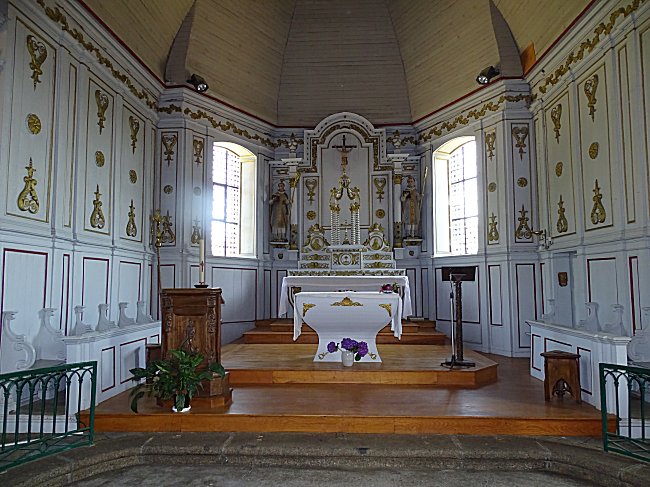
The high altar has the shape of a curved tomb. The panelling of the altarpiece includes a tabernacle located between the medallions in bas-reliefs of the Virgin and Saint John. It is surmounted by a canopy carried by four twisted columns.
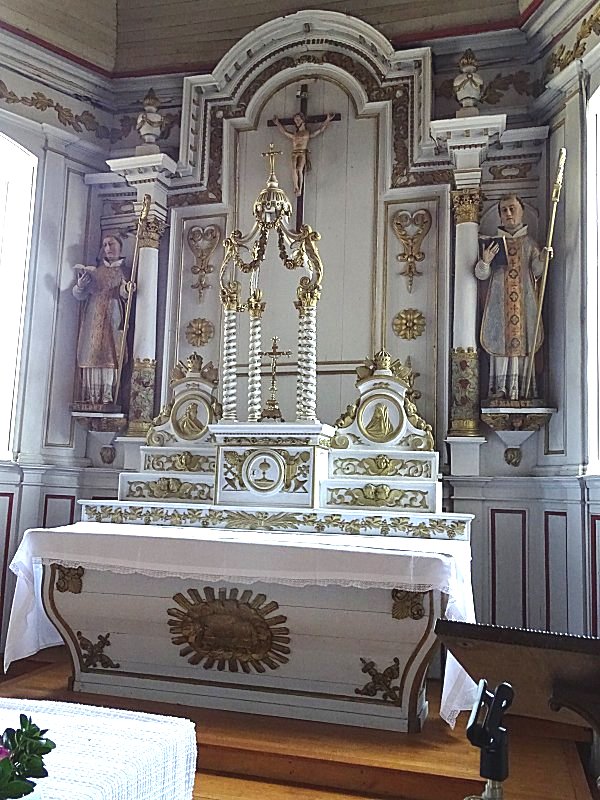
Two polychrome wooden statues, particularly similar, frame the chevet. On the left Saint Ildut, is the patron saint of the building. To the right is Saint Maudet. Both are represented as bishops with an episcopal cross.
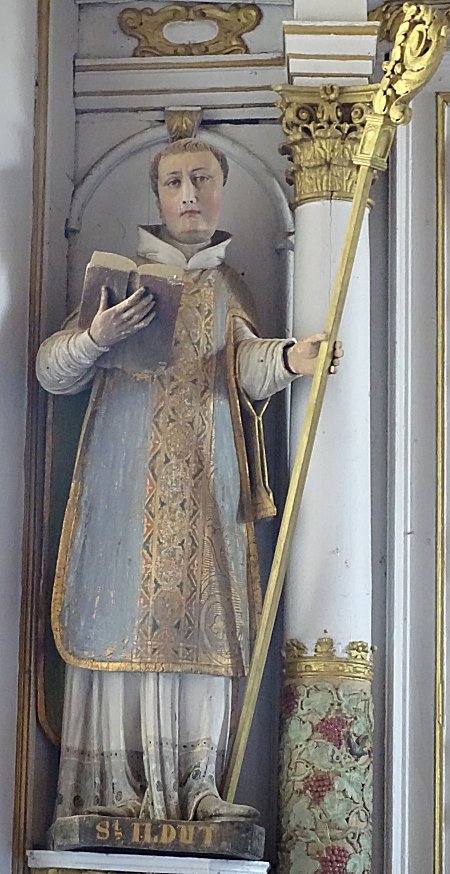
|
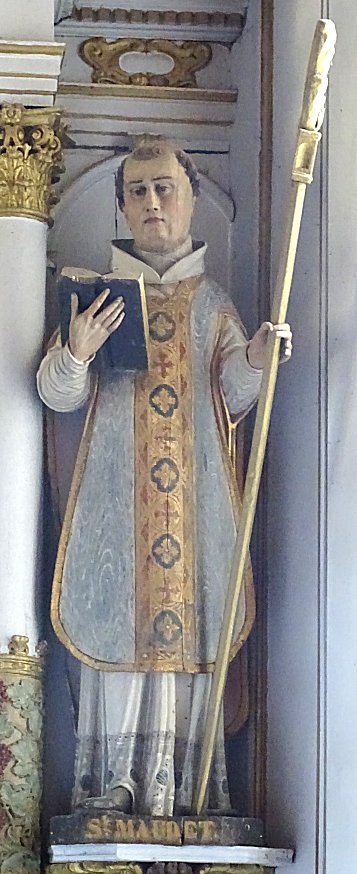
|
Saint Maudet, or Maudez, also called Saint Mandé, is very venerated in Brittany. Prince born in Ireland in the Vth century and become monk, he would have reached on the north coast of Armorique. After having joined Saint Samson then Saint Tugdual, he would have founded his own monastery in Lanmodez, in the Côtes d'Armor. Saint Maudet is reputed to heal the deaf, blind and paralytic. He is also used to defend against snakes. His relics are distributed in nine Breton churches including the cathedral of Quimper.
At the corners of chancel and transept are two side altars. The one on the left is dedicated to the archangel Saint Michael who is seen trampling underfoot the dragon representing Evil.
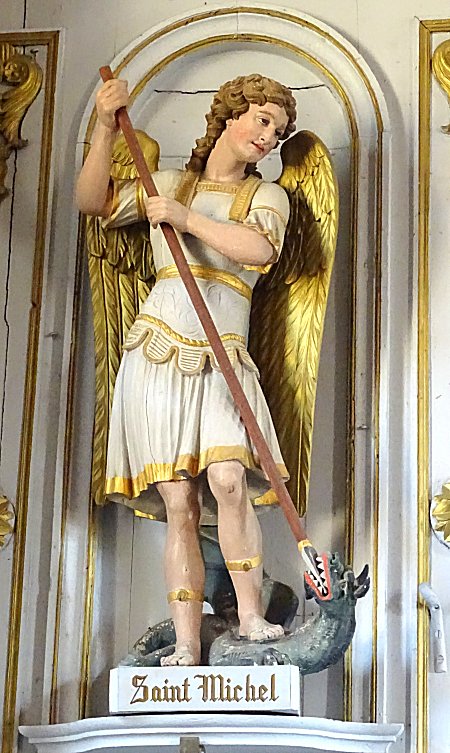
A Virgin with Child called Our Lady of Lanildut sits above the one on the right.
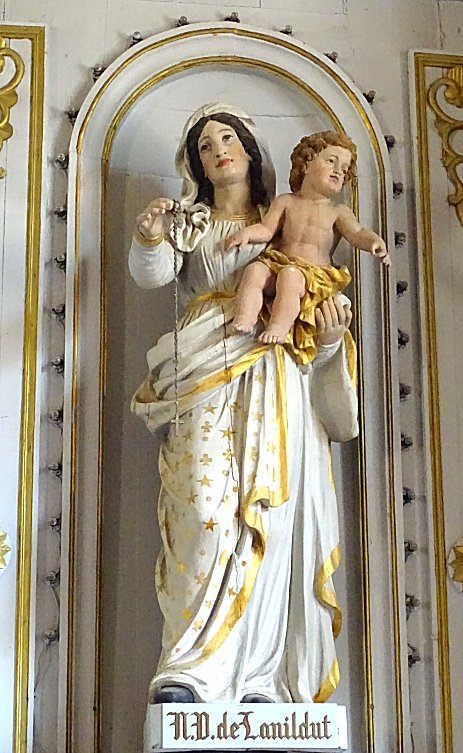
All these polychrome wooden statues date from the XVIIIth century and are the work of Royal Navy's painters.
The beautiful statue of Saint Anne teaching her daughter Mary to read is much more recent.
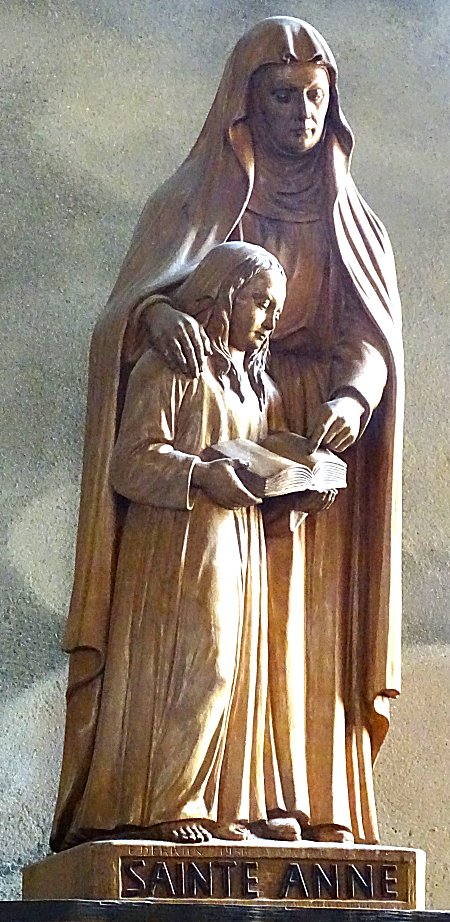
It dates from 1958 and is the work of the sculptor François Derrien.
More banal are two other floral statues representing one Saint Joseph and Christ, the other Saint Anthony of Padua dressed in a rich Franciscan bure and holding in his arms the child Jesus, as he had said he had seen in a dream.
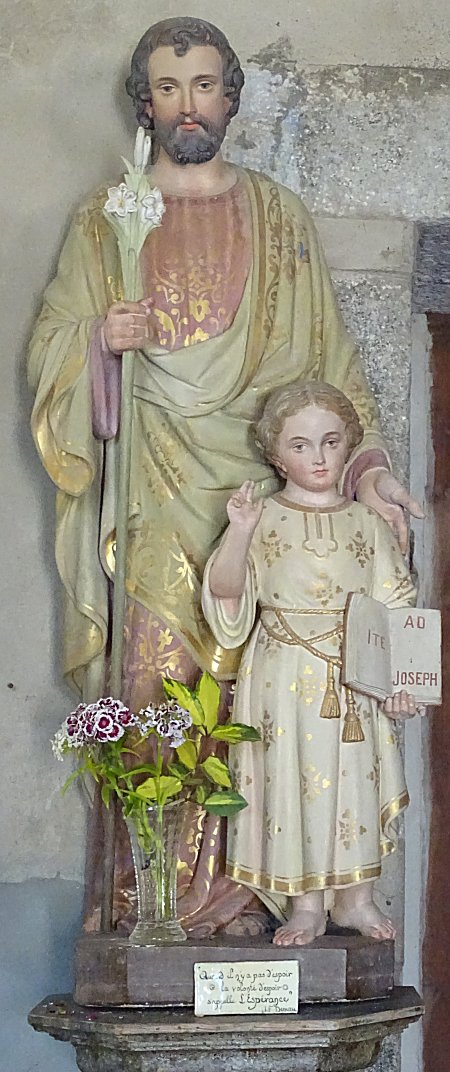
|
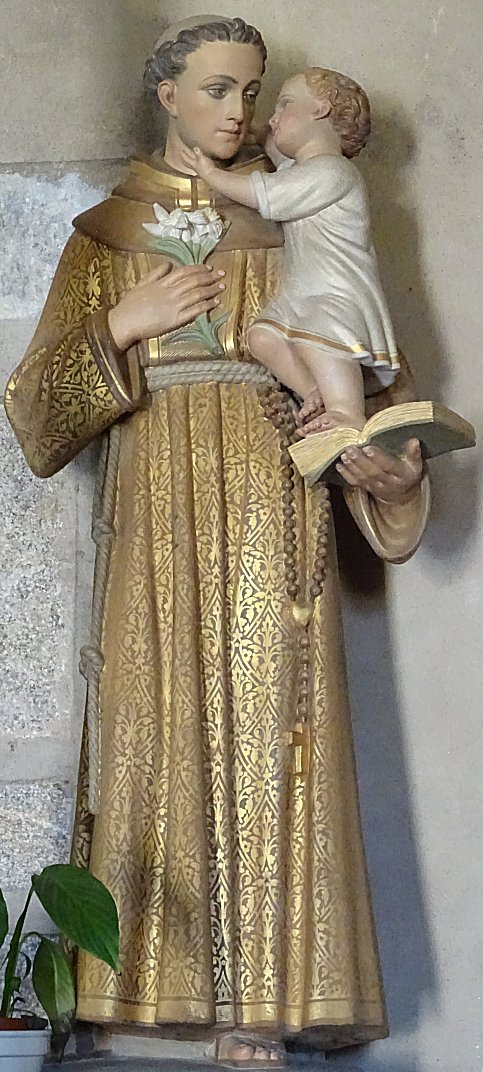
|
Before leaving the building, one will not fail to contemplate the carved wooden confessional dating from the end of the XVIIth century and the rich pink marble baptismal basin which await the parishioners behind the chairs.
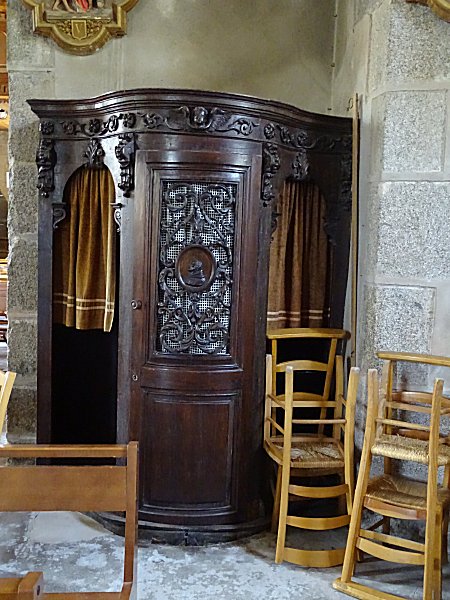
|
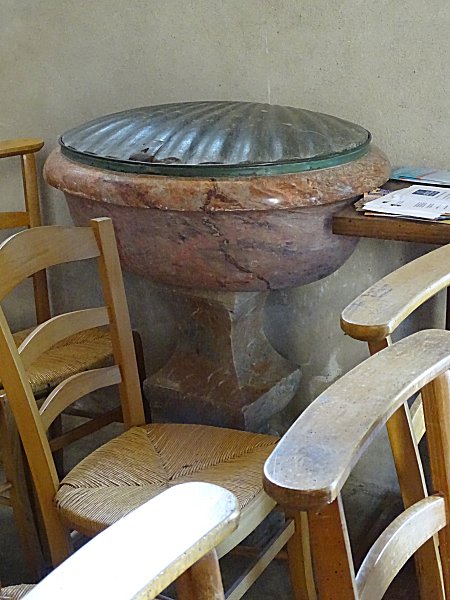
|
Outside, on the south side of the church, an old sundial, very interesting, just needs to be observed carefully. We will discover the details on a special page of this website. (
The Lanildut sundial )
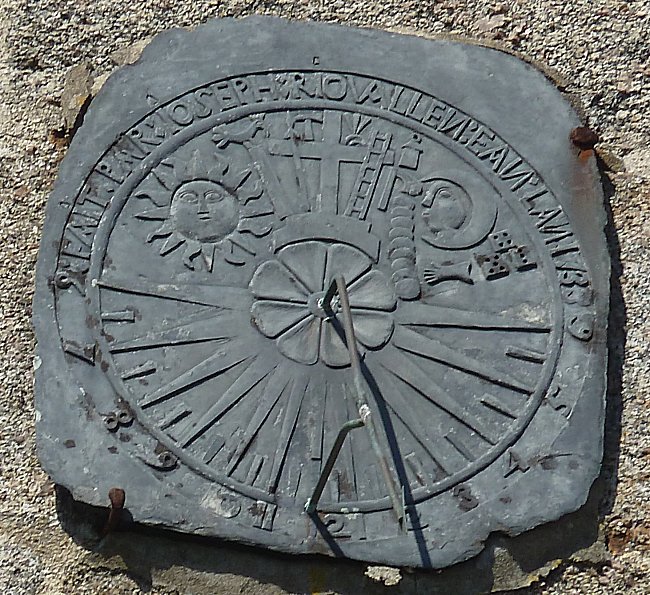
READ MORE
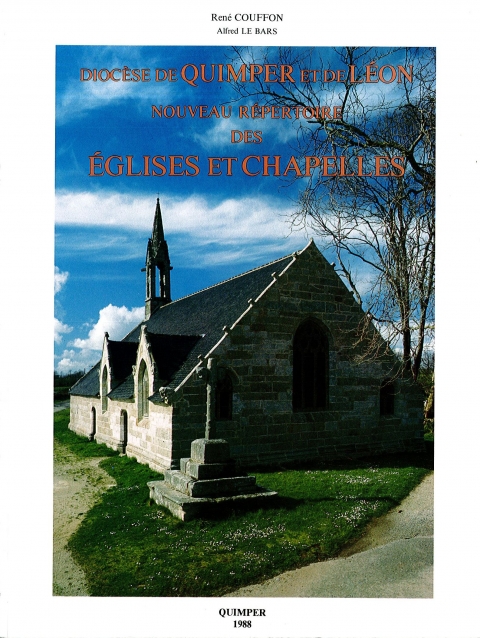
"Nouveau répertoire des églises et chapelles"
René Couffon, Alfred Le Bars, Diocese of Quimper and Leon, Quimper, Diocesan Association, 1988, 551 p




